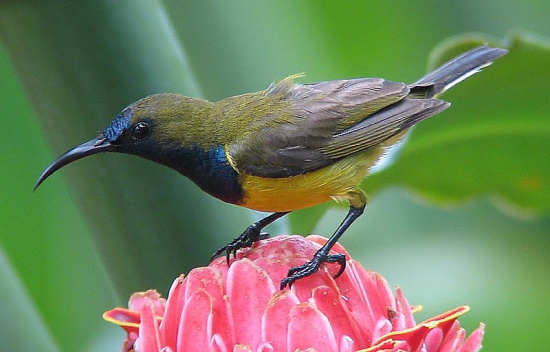
Cinnyris jugularis
SUBFAMILY
Nectariniinae
TAXONOMY
Certhia jugularis Linnaeus, 1766, Philippines. Twenty-one subspecies.
OTHER COMMON NAMES
English: Yellow-bellied sunbird, yellow-breasted sunbird,
black-breasted sunbird, black-throated sunbird; French:
Souimanga а dos vert; German: Grьnrьcken-Nektarvogel;
Spanish: Nectarina de Lomo Olivo.
PHYSICAL CHARACTERISTICS
4.5 in (11.4 cm); male 0.24–0.37 oz (6.7–10.5 g), female
0.21–0.32 oz (6.0–9.1 g). Dull olive-brown upperparts with
contrasting yellow underparts. Metallic forehead, throat, and
upper breast. All underparts bright yellow in females.
DISTRIBUTION
Myanmar, Thailand, Indochina, Malaysia, southeastern China,
Philippines, New Guinea, and northeastern Australia.
HABITAT
Scrub, mangroves, forest, woodland, farmland, plantations, and
gardens.
BEHAVIOR
Tame but restless. Often in mixed-species groups. Aggressive.
Male displays underneath female, exposing black breast and
pectoral tufts while moving head from side to side and calling.
FEEDING ECOLOGY AND DIET
Often feeds low down. Sometimes hovers in front of flowers,
leaves, and cobwebs to take nectar, insects, and spiders respectively.
Also eats small fruits and pollen.
REPRODUCTIVE BIOLOGY
Oval, purse-shaped nest with hooded side entrance built by female
of grass, moss, lichens, and other vegetable matter. One
to three grayish eggs incubated for two weeks. Young fledge
after further two weeks. In Australia, parasitized by Gould’s
bronze cuckoo (Chrysococcyx russatus).
CONSERVATION STATUS
Not threatened.
SIGNIFICANCE TO HUMANS
Sometimes nests near or on houses, otherwise none known.
Photo Gallery of - Olive-backed sunbird
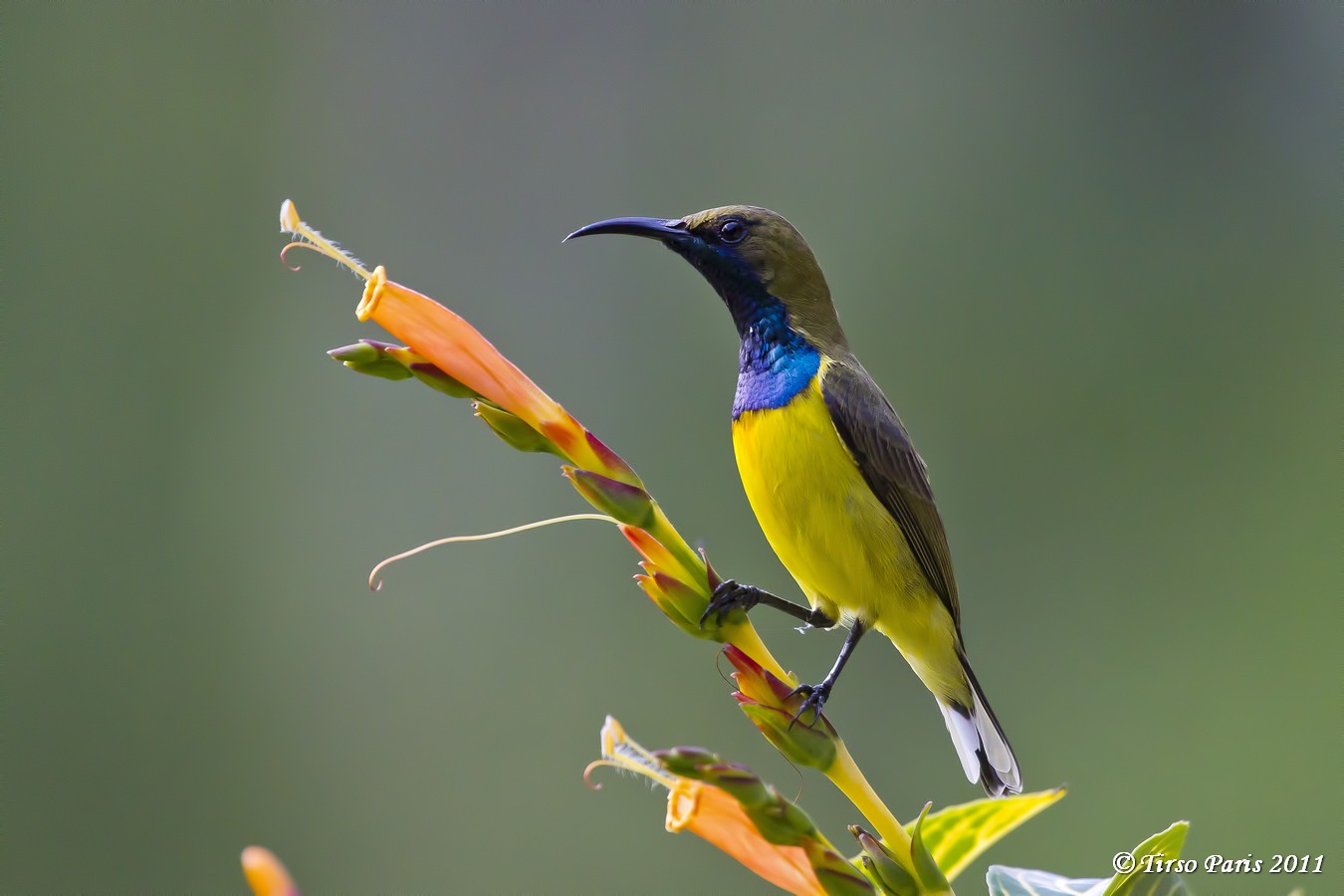
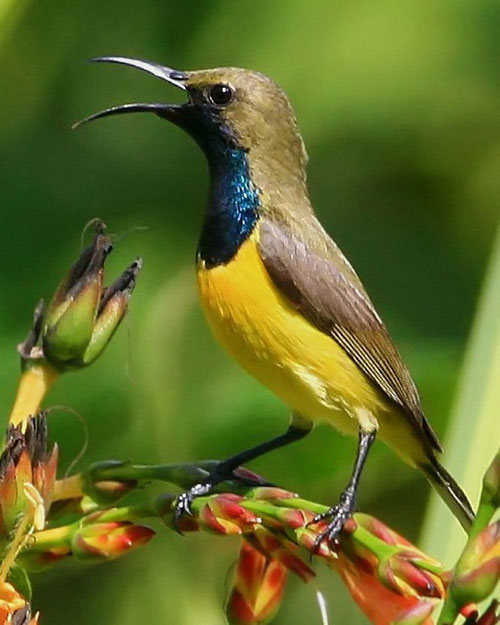
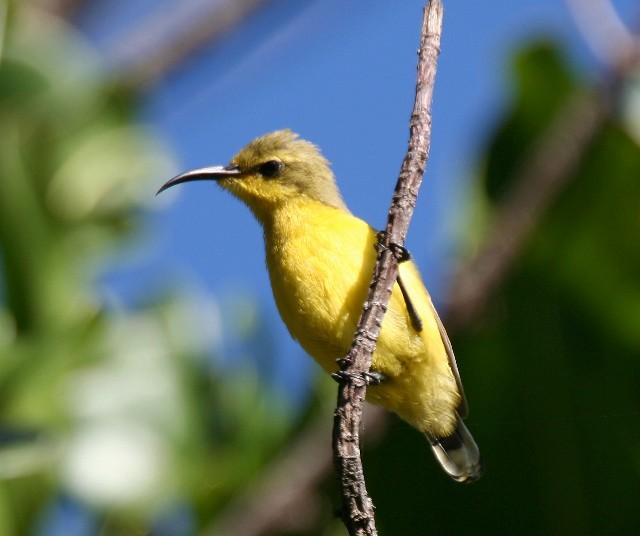
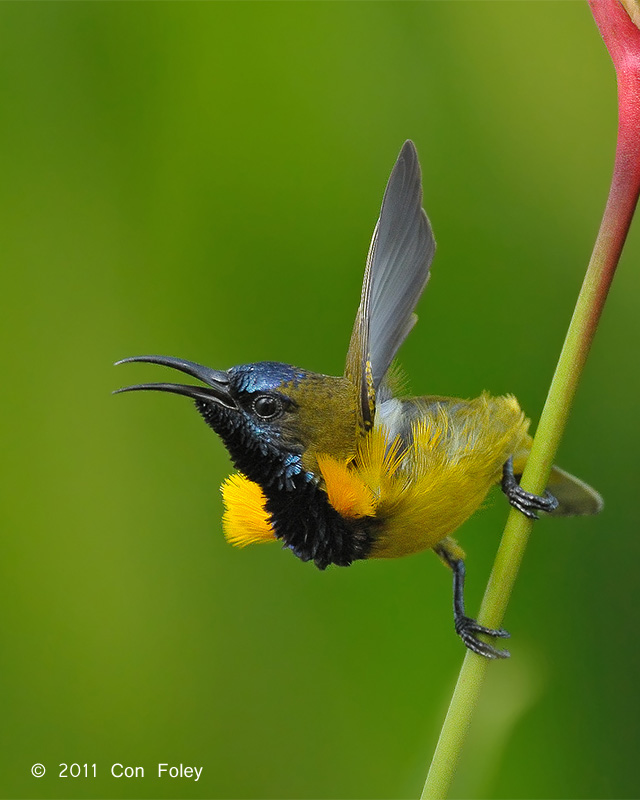
 Animalia Life
Animalia Life